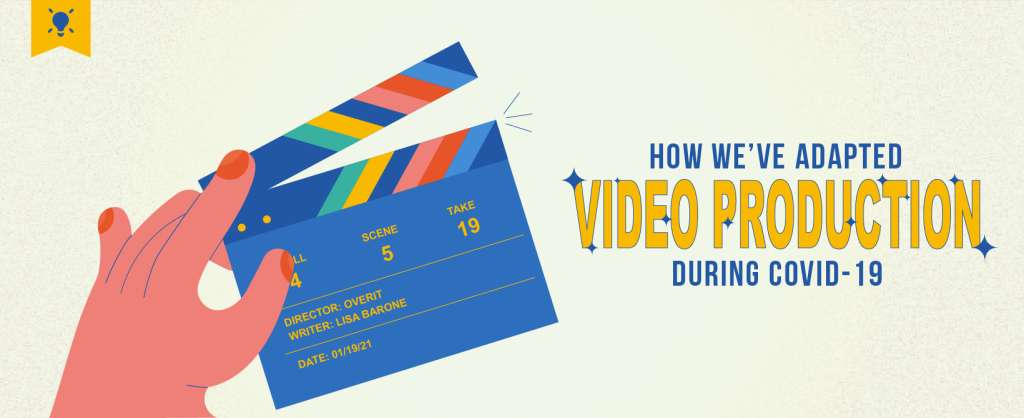
We’re known for some pretty innovative video production. Video, animation, motion graphics—it’s kind of our thing.
When COVID first hit last March, clients saw their advertising and marketing plans get… reshuffled, to say it nicely. Digital assets, keywords, and written content had to be changed out to reflect this new reality and a new, very-digital consumer. In many cases, it was fun. Changing things on the fly, getting creative, helping them navigate uncharted waters with new solutions.
But there was also that video shoot they were planning. The one that would be used to fuel new ad spots, pre-roll and social media advertising, and, well, pretty much all of their creative for the next year. Shooting video presented an entirely different set of problems.
Here’s how we’ve adapted video production during COVID-19.
Slimmer Scripts
I do a lot of scripting at Overit. It’s one of my favorite parts of my job. Getting to work with our Creative and Motion teams to tell a story, convey emotion, and push someone toward action. Scripts in a COVID era had to change. They needed to:
- Rely more on voiceover that could be done in a private recording studio rather than on set.
- Include fewer actors and faces to keep conditions as safe as possible.
- Lose the background actors filling up a room.
- Consider locations—shooting outdoors or where we had a more controlled environment. Nothing where we couldn’t control exactly who came and went.
- Use stock video when we couldn’t shoot unique footage. That sometimes gave us less control over the story.
- …just to name a few.
Scripting during COVID came with new restrictions, but also some added creativity.
Essential-Only Crews
We love shoot days around here. And when you think about who you want on set with you to film, that list can get long pretty quickly. There are:
- Your actors (who you’ve now cast purely online and never met IRL…)
- A handful of camera people to capture different angles
- Sound producers including audio and boom operators
- Lighting
- Hair and makeup
- A Creative Director
- A writer
- Producer
- Various people from the client’s team and ours
Shooting days are fun days, filled with collaboration. But… with COVID, that didn’t always work.
Now it’s about making the crew as small as possible. Limiting camera angles (to limit camera people). Streamlining who is present from our team and client-side and staggering who can be present at a given time to keep numbers down. Doing makeup once at the beginning and asking people to do their own touch-ups during the day. Modifying craft services, such as offering individually wrapped meals. Giving direction and script edits remotely via text or video call. It was a new way of shooting for us. No less collaborative but collaboration from afar.
Creative & Remote Shooting
Last year I was part of a 100% remote video shoot for the time in my career. We recorded a small group of medical professionals interacting via Zoom and turned it into a comedic spot that promoted their virtual event while also acknowledging the absurdity of the situation.
I watched our video team strategically film people to make it look like they were close to one another even though they were standing at least six feet apart.
We got creative reusing old, unseen footage for clients when we couldn’t shoot new stuff. We hung our Motion team out of car windows while driving Capital Region highways to get shots we maybe wouldn’t have gone for before. We leveraged our animation chops to say what we couldn’t get through live video.
Difficult times inspired innovative solutions and showed us there are opportunities to be found if you’re willing to look.
On-Site COVID-19 Testing
Sometimes there wasn’t any getting around it. We needed to shoot in a real location with real people. But how can ensure everyone is as safe as possible?
Here in New York, we found a great partner, CineMedics, which provides onsite rapid COVID testing for video shoots. We recently worked with the New York State Department of Health, and providing the tests the day of was a huge relief to everyone, knowing everyone who walked onto the set was cleared. Like drive-through testing, the tests are done within everyone’s individual car, and the results come back in roughly 15 minutes.
Then our crew was off to races.
We’re going to be living this COVID life for a bit more—but don’t let it stop you from talking to your audiences, even through video. Your business is still here. Make sure your community knows it.





